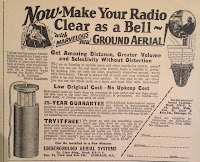 |
| Artwork by James Mckay |
Scientists based in the Energy Building at the University of Leeds have won £25k funding from the Royal Academy of Engineering to produce a graphic novel entitled Dreams of a Low Carbon Future. The novel will be a collaboration between scientists, artists, and school children, and will examine the issues of climate change and how we adapt our society to achieve a low carbon sustainable future.
The project is currently seeking artists and designers from the University's UGs, PGs, academics and support staff who are interested in participating in this project.
5,000 copies of the graphic novel will be printed. It will be launched at Thought Bubble Comics Festival in Leeds (23-24 November 2013), and exhibitions of artwork will be held at the Cartoon Museum London and the Stanley & Audrey Burton Gallery on campus in early 2014.
High profile contributors include the Chief Scientific Advisor to the Department of Energy & Climate Change, Prof. David Mackay, Futurologist and author of You, Tomorrow, Dr Ian Pearson, and US environmental activist and author of Endgame, Derrick Jensen.
The project is managed by James Mckay, a professional comics artist working for 2000AD magazine and manager of the Doctoral Training Centre for Low Carbon Technologies.
Participants are invited to contribute:
* Comic strip art
* Single images e.g. sketches/paintings
* Text e.g. poems, stories that could be illustrated by other artists
* Design – help design, format the book and promotional material (e.g. posters, flyers etc.)
* Concepts – what do you think the future will look like?
Anyone with Sci-Fi/Fantasy/Futurist/comics/graphic novels interests, or with interests in the environment, technology or science in general will hopefully find this a fascinating, unusual project to be involved in.
ANY contribution, no matter how small, will be valuable. Please contact James at j.mckay@leeds.ac.uk for further information.








